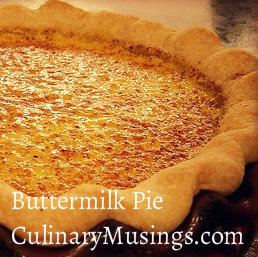Simple ways to roast meat
Scan the menu of many fern-bar restaurants and you'll see a menu option of pot roast. People love ordering it because it evokes memories of home dinners and good feelings. Now think about the grocery store. Ever notice how they put those roasted chickens up front to get you hungry? There are few things in life that stop shoppers faster than the smell of roasting chickens wafting through the air. Many shoppers are overcome with the appearance of the golden-brown skin glistening with juices and the sensory experience. Many stores will offer samples to customers - a sure way to sell more chickens because the moist, tender meat is filled with flavor.
Roasting meat is easy
Roasted meats is something you can easily learn. And surprisingly, the prep time is normally short; the process is simple, and the results are highly rewarding.
The cooking trick many culinary arts schools teach is to always begin with a great cut of meat and fresh vegetables. Whether your menu calls for a standing rib roast, a whole chicken, pork roast or lamb shanks, choose the best available to ensure tenderness. Likewise, your vegetables will have more flavor if they are fresh.
One Pan Wonders
You will need to have a large skillet, basting brush or a large spoon, a pan that fits the size of your roast or chicken well (not too big, not too small), seasonings and an oven preheated to a high temperature (about 450 degrees). After about 10-15 minutes, reduce the heat to 350 degrees.
Roasting is a dry-heat cooking technique so - depending on how much fat your cut of meat contains - adding moisture by basting the meat is usually necessary.
Season your meat and vegetables while you preheat your skillet on high heat. You'll quickly sear your meat to lock in all the juices and to ensure that deep, golden color while roasting. Allow the meat to cook evenly on all sides until each side is nicely caramelized. If your skillet is ovenproof, you can continue to use it during the roasting process. If it has a plastic or rubberized handle, transfer your meat to a roasting pan and set your skillet aside. Don't clean it! You'll want to save those wonderful browned bits for a sauce later.
Add Vegetables To Make a Complete Meal
Wash your vegetables, slice them into large chunks and place them in the bottom of the roasting pan. Lay your meat on top of the vegetables. Cooking school instructors will tell you there is a dual purpose for this technique. First, it keeps your meat from sticking to the bottom of the pan. Second, it allows the vegetables to simmer in all the wonderful juices that drizzle down the side of your meat as it cooks.
If you are roasting chicken, start with the breast-side down. For bone-in meats, lay the roast bone-side down to start. Allow your dinner to roast anywhere from one hour to four hours, depending on the cut and weight of the meat. For a seven- to eight-pound standing rib roast, most culinary arts schools suggest a cooking time of about three and one-half hours. For a whole chicken, that time would be reduced to only about one hour.
As the meat cooks and the juices begin to fill the bottom of the pan, you'll be ready to start basting. As you open the oven door, be prepared for all those ingredients to combine into a whirlwind of deliciousness. The smell of dinner roasting in the oven is one of the most tempting smells around. Check your vegetables and turn them if need be. Then, with either a large spoon or a basting brush, carefully take juices from the bottom of the pan and drip them over the meat, starting at the top. You'll do this several times during the cooking process.
When your meal has finished cooking, remove the pan from the oven and allow the meat to rest for 10 minutes before you serve. In the meantime, reheat the skillet you used for searing. Once hot, deglaze the pan by adding the drippings from the bottom of your roasting pan and then allow them to come to a fast simmer. Re-season the sauce with salt, pepper and other seasonings you used on your meat. Another tip taught in cooking school is to combine a tablespoon of butter with the sauce after it has reduced by half for added flavor.
Multi-Sensory Meal
Family and guests treated to the aroma of a roast will appreciate the tender meat, golden roasted vegetables and a fabulous sauce that complements the flavor. A favorite side is mashed potatoes. The meal is a multi-sensory sensation that they will love.







